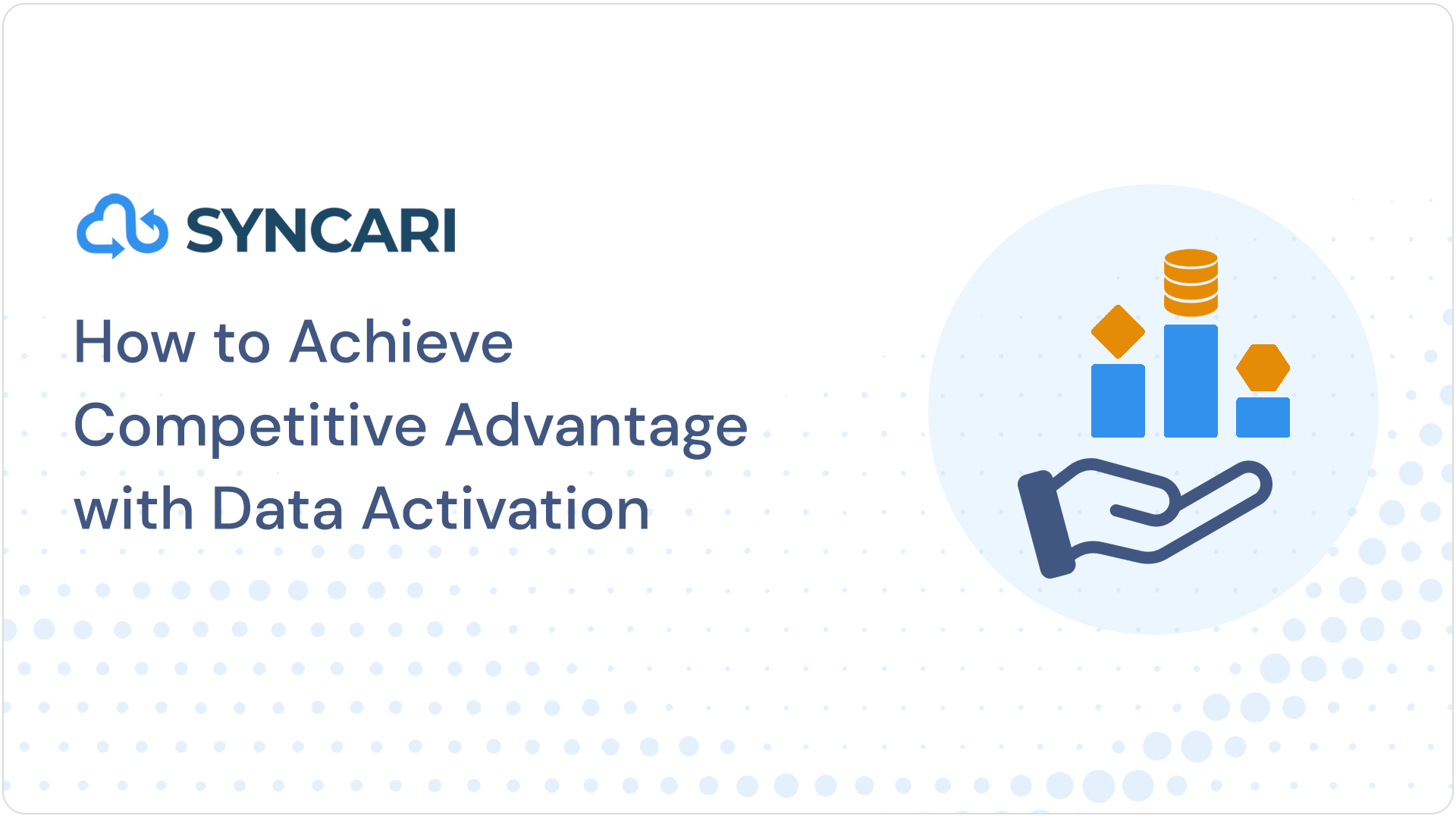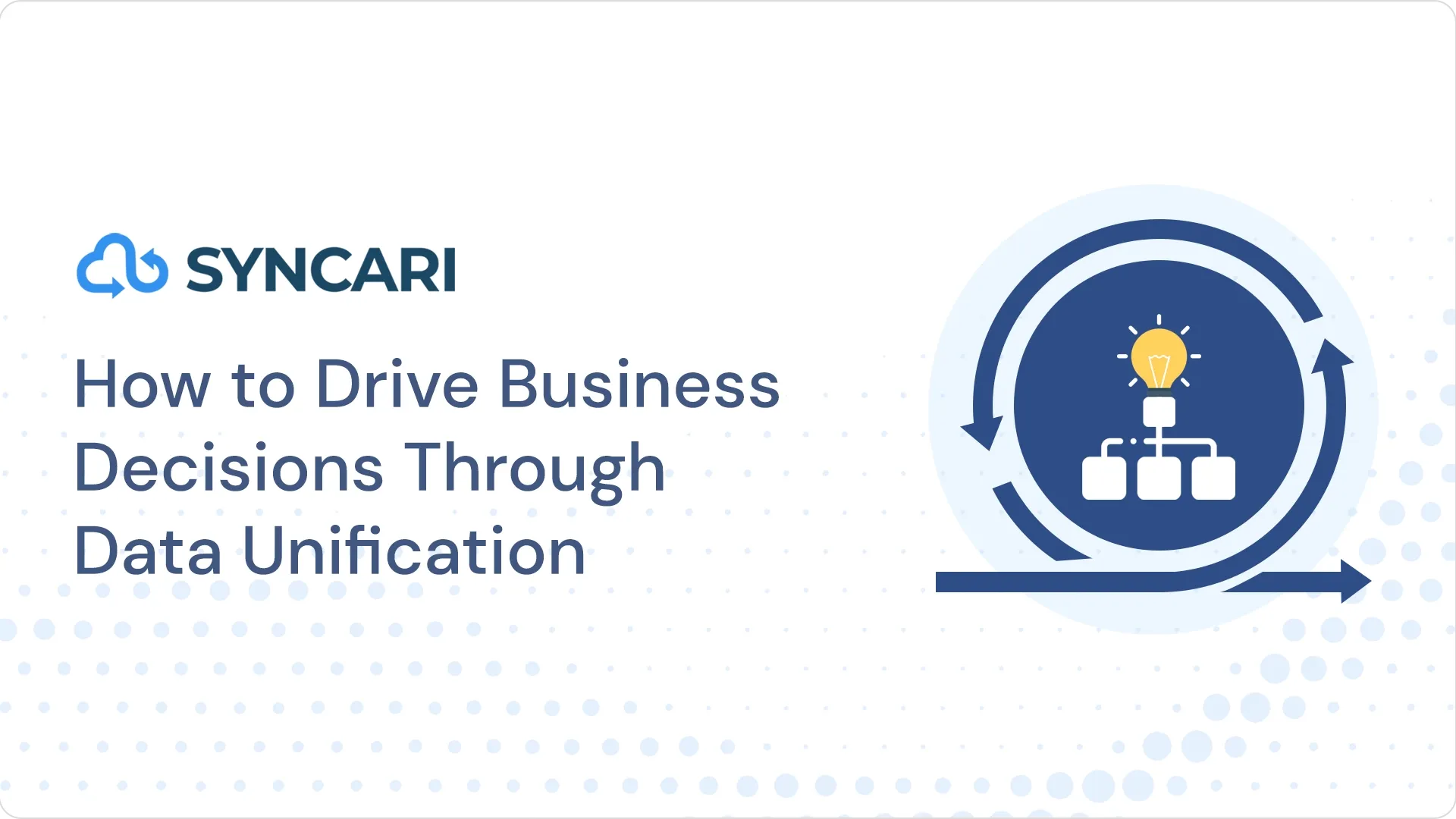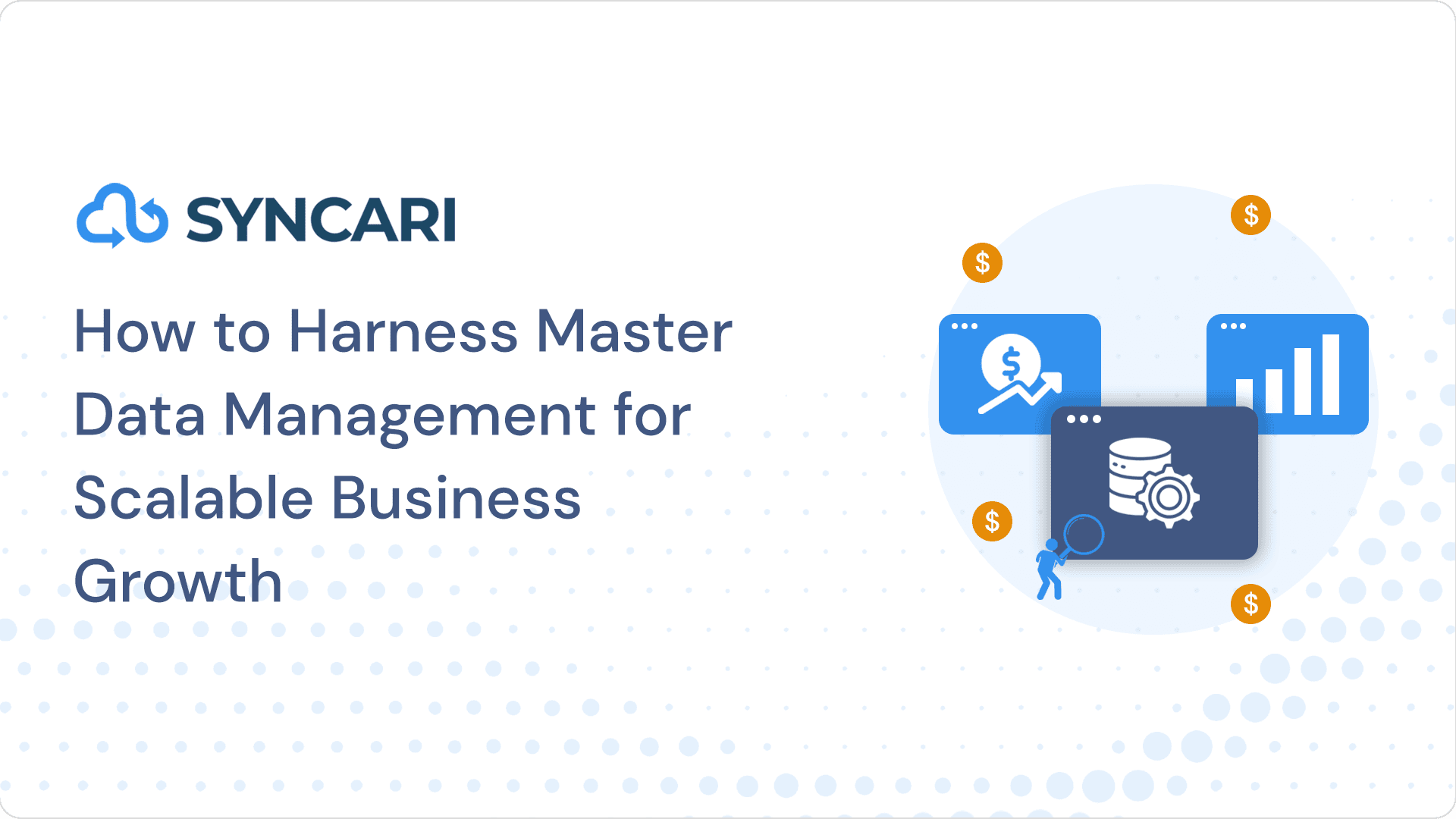In today’s digital era, data warehouses have become essential for effectively using data to generate insightful conclusions.
Two cloud-powered data warehousing solutions such as Snowflake and Redshift both provide exceptional performance and business intelligence with scaling capabilities.
In this article, you’ll come across an in-depth comparison of Snowflake vs Redshift while learning how Syncari can unify multiple CRMs and provide unified customer data within a few days.
Redshift vs. Snowflake: In-Depth Comparison

While contrasting Snowflake vs Redshift, it is possible to see how these data warehousing solutions and their relevant attributes might be used based on your firm’s unique needs. Think of this:
- JSON: Deal? Perhaps not at all? Unlike Redshift, Snowflake provides more reliable JSON storage, which means that Snowflake already has native support for JSON stockpiling and query. JSON is far more challenging to query and utilize with Redshift, which separates it into strings when it loads.
- Data-Related Tasks: DIY? Or done for you? Amazon Redshift uses special maintenance. Redshift cannot automate several activities, including data compression and vacuuming. That may call for a great deal of maintenance work. Snowflake, on the other hand, optimizes many of these operations, which can help you save a great deal of time if you need to identify or fix a problem.
- Security: Unlimited food service? Maybe one dish at a time? Companies can tailor an encryption system using Redshift’s extensive security features. Security is an easy decision because Snowflake’s compliance and safety features are already integrated through every tier of service in accordance with your company’s data policy.
- To Bundle or Unbundle: Redshift combines storage and computing services, offering quick expansion to the corporate level if required. Nevertheless, Snowflake provides compute and storage as distinct services, and both come in tier editions. This may be the most adaptable, sensible choice for some enterprises—you still receive the required functionality but can expand at any moment.
Evaluate the aforementioned aspects based on the degree of optimization you require in a data warehouse. These qualities serve as the main determinants of whether a Redshift or Snowflake feature is advantageous or disadvantageous for your company when compared to your data strategy.
Understanding the Fundamentals of Snowflake and Redshift

Modern cloud-based data warehouse solutions – Snowflake and Redshift each provide several intriguing data management solutions.
To start distinguishing the two, Amazon Redshift is a cloud-based, petabyte-scale data warehouse solution that is completely managed.
The incredible thing about this is that you could commence with a small amount of data—say, a few hundred gigabytes—and expand up to a petabyte or even more as your necessities grow.
With its Snowflake Elastic Data Warehouse solution, Snowflake Computing offers cloud-based business intelligence and storage.
By leveraging cloud-based software and hardware, business users can store and evaluate data with the help of this solution.
The information is then kept in Amazon S3. Instead of relying on tools like Hadoop, Snowflake uses the ecosystem of public clouds.
As was already said, the two aforementioned solutions are strong and provide distinctive capabilities for handling data. But there are unquestionably distinctions.
Before getting started with the comparison, let’s address the elephant in the room – Syncari. This amazing scaling tool enables businesses to unify multiple data warehouse instances and bring them under a single platform.
Let’s learn how Syncari’s unifying data solution can help businesses and eliminate the need to migrate to one CRM.
Why is Syncari the Best Tool to Pair with your Snowflake & Redshift Needs?
Today, the cutting-edge, scaling platform Syncari enables businesses to benefit from its ecosystem where one can unify multiple CRMs and other systems seamlessly.
The deployment of every MAP or CRM is distinct. In rare cases, entities like opportunities, companies, accounts, or contacts have a few of the same fields, architecture, and naming conventions across numerous tools.
Thus, instead of cobbling together integrations between these two systems, you can use Syncari to unify the CRMs and other applications to generate almost real-time data in a matter of weeks for the best results.
Thanks to Syncari’s patented stateful multidirectional sync, it can keep applications in sync without any need of migration. It implies that apps, accounts, and contacts are unified or managed across every connected system.
Data warehouses are designed to store large amounts of structured data from various sources, such as transactional databases, web applications, and third-party data providers. However, managing this data can be a challenge, especially when dealing with complex data pipelines, data quality issues, and disparate data sources.
Syncari can help address these challenges by providing automated data validation, cleansing, and normalizing capabilities. By automating these tasks, Syncari can reduce the time and resources required to manage data in a data warehouse, making it easier to keep the data accurate and up-to-date.
In addition, Syncari’s ability to automatically detect and resolve data conflicts and inconsistencies can help ensure that the data in the data warehouse is consistent across all sources. This can help organizations make better-informed decisions based on reliable data, leading to improved business outcomes.
With clientele like Conga claiming Syncari to be their favorite post-merger tool, businesses and individuals can now bid goodbye to the need to migrate from one CRM to another.
Now that you know how Syncari can generate customer data in a week by eliminating the need to migrate from Snowflake to Redshift or vice versa (that otherwise would have taken months, if not years), let’s learn some of the key differences of these data warehouses.
Snowflake Vs. Redshift: Key Differences
Despite the commonalities, there are several significant distinctions we need to discuss.
Redshift Vs. Snowflake: Integrity & Efficiency

Redshift may appear to be the obvious choice if your business currently uses AWS. Snowflake, meanwhile, is also available on the AWS Marketplace and has on-demand features.
Redshift integrates seamlessly using AWS products like Kinesis Data Firehose, CloudWatch, DynamoDB, Database Migration Service (DMS), and Athena.
Additionally, if your data is stored in Amazon EMR, DynamoDB, or Amazon S3, Redshift can benefit from the massively parallel processing to load your data quickly.
Performance issues with Redshift may arise if the Sort and Distribute keys are not well prepared. These keys provide the data access and storage methods used by the system.
Setting them up and keeping them up might be difficult. For instance, once a distribution key is entered into a table, it cannot be modified later.
Hence, before implementing these ideas, you need to comprehend them completely. Also, remember that Redshift is not a good choice when working with a live app database.
Nevertheless, it doesn’t provide the same efficiency on live apps despite being quick at conducting queries and analytics on large databases. If you require it for such a use scenario, you must first load the required data into a cache layer before loading it into Redshift.
It’s vital to remember that Snowflake lacks the same integrations as Redshift if you’re considering adopting it. Thus, it isn’t easy to interface the data warehouse with programs like Glue or Athena.
Snowflake compensates for this, however, with a wide range of additional integration possibilities, including, for example, Apache Spark, Qlik, and Tableau.
You may therefore conclude that both solutions have roughly equal integrations. In this regard, deciding which integrations are crucial for your business is more significant than choosing between Redshift and Snowflake.
Whenever it comes to Snowflake vs. Redshift, Redshift represents the more established option, while Snowflake has advanced significantly in recent years.
Data optimization features like dist keys and materialized views imply that for both the data warehouses, the dashboards can run up to 150x faster than any other source database.
Snowflake vs. Redshift: Security

Redshift achieves some significant compliance and security goals. All users are subject to full enforcement of these features.
Further accessible technologies include cluster encryption, data encryption at rest and in transit, sign-in credential security, access management, cluster security groups, and SSL connection security. The access rights are undoubtedly localized and granular.
Redshift makes it simple to limit access to clusters from the inside or outside. Moreover, a VPC or virtual private cloud can be used to isolate the network, and a VPN can be used to connect it to the IT infrastructure.
Besides robust security features like network isolation, Snowflake also enables always-on encryption. But opposed to Amazon, the security features of Snowflake come in tiers. The higher the tier, the more the pricing. On the bright side, you won’t have to pay for the security features you don’t require.
AWS Redshift gets an edge on security.
Snowflake And Redshift: Pricing Models
Experts extensively compared Redshift and Snowflake’s pricing structures and discovered that Redshift is frequently less costly than Snowflake for on-demand consumption.
Yet, it’s crucial to remember that top data warehouses, such as Snowflake, Redshift, and BigQuery, have unique price structures.
Pricing Model of Redshift
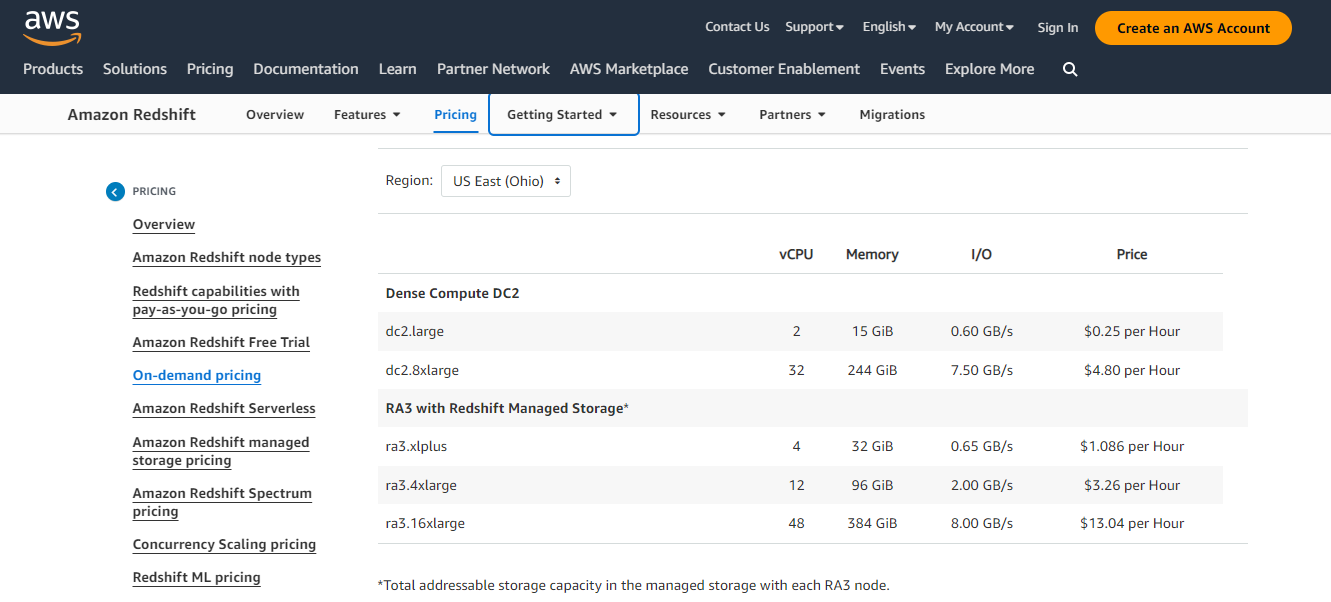
Redshift bills in one hour per node unit, including computing capacity and data management. Redshift’s monthly cost may be calculated by dividing the price per hour by the cluster’s dimensions and the number of hours in a month.
Redshift Monthly Pricing is calculated as follows: [Price Per Hour] x [Cluster Size x [Hours per Month]
Pricing Model of Snowflake
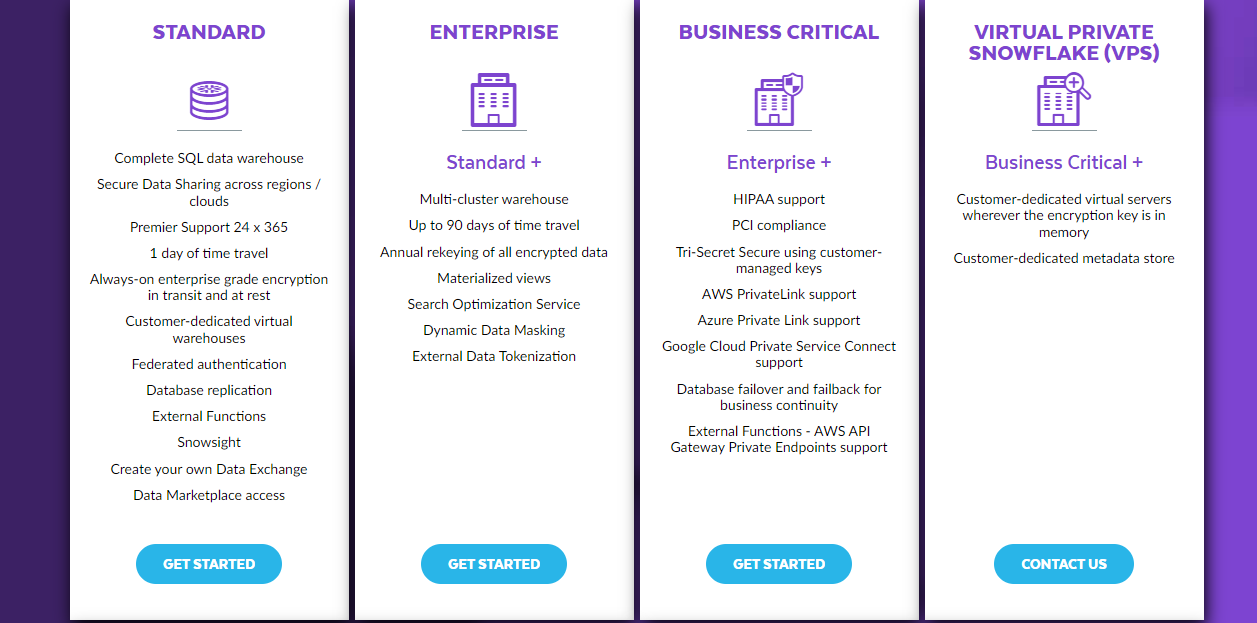
Your consumption habits strongly influence the cost of Snowflake. Data storage is priced separately from computing warehouses since they are not connected.
The variable pricing approach offered by Snowflake allows groups to resize themselves in response to shifting workloads easily. Clusters will instantly halt when no queries are executing and start afterward. When the query load drops, this can enable you to save money.
Snowflake Vs Redshift: Storage and Compute Separation

Users can autonomously adjust these operations up or down thanks to Snowflake’s separation of the storage and computation functions.
There was no physical barrier between computing and storage in Amazon Redshift’s prior iteration. For increased storage capacity or processing power, you must create more clusters due to the absence of separation.
As R3 nodes are introduced, users can grow to compute independently of storage, enabling a scaling environment similar to Snowflake.
Redshift Spectrum, a function of Redshift, allows you to run SQL queries right on data stored in the S3 bucket, obviating the need for data migration.
Amazon Redshift Managed Storage comes with AQUA (Advanced Query Accelerator) capabilities when using RA3 nodes at no extra charge.
By dynamically speeding up specific types of queries, AQUA, a networked and hardware-accelerated cache, allows Amazon Redshift to operate up to 10x quicker than comparable enterprise cloud data warehouses.
Snowflake Vs. Redshift: Pros and Cons List
Snowflake
Pros:
- It has a simple web-based user interface and is a SaaS solution.
- Several semi-structured data structures, including JSON, are supported.
Cons:
- Your product version significantly impacts how secure it is, and doing so may result in extra charges.
- In most use scenarios, it may cost more than Amazon Redshift.
Amazon Redshift
Pros:
- It allows for smooth interaction with other Amazon services as well as coexistence with on-premise infrastructure.
- Whether you use the RI or on-demand pricing model, it gives a clear and transparent price structure. RI also offers considerable cost reductions.
- It provides improved data protection in addition to secure backup solutions.
- Faster query execution is offered for near-real-time and concurrent analysis.
- It offers multiple data output formats.
- To make it a cutting-edge, cost-effective data warehousing solution, AWS continually adds new capabilities like ML connection, independent storage, and computation with RA3 nodes, AQUA, concurrent scaling free for one hour per day of consumption, dynamic workloads with anticipated pricing, and more.
Cons:
- Although it is more expensive, Amazon Redshift Spectrum gives convenience.
- There are now two alternative release cycles for Amazon Redshift: Track Maintenance and Current Maintenance Track. The default track is Current Maintenance Track. However, the user has the option to change it.
Conclusion
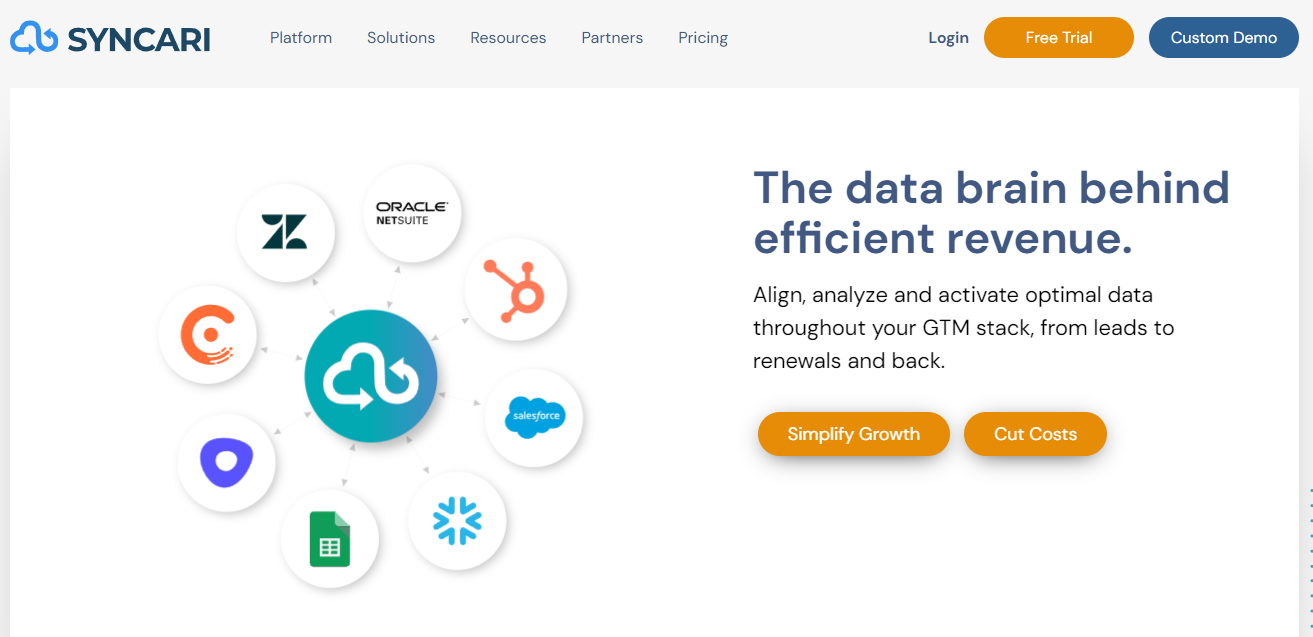
Here’s why Syncari needs to be part of your stack
You can get the best modern data warehouse solution in the market with either Amazon Redshift or Snowflake. Your business resources and requirements play a crucial role in determining which is the better option.
For instance, if your business seeks to run on scalable, automated multi-cloud data warehouses while having a low-query workload, then the better choice will be Snowflake.
However, suppose your company deals with numerous workloads on both semi-structured and structured data while having a high-query workload via other AWS services. In that case, the best choice will be Amazon Redshift.
Regardless of which path you choose, Syncari ultimately helps you get the most out of your data, by operating as the integration layer between the warehouse and your business applications (CRM, marketing, ERP, etc.). Syncari can work with your data warehouse solution or can support your data operations altogether.
A few reasons why Syncari is necessary:
- Seamless data integration: Syncari can help you to unify data from multiple sources into your data warehouse quickly and easily. This can save you a lot of time and effort, and it can also help you to ensure that your data is consistent and accurate.
- Data quality: Syncari is self-healing which can help you improve your data quality and integrity since it is built to automatically identify and resolve errors without intervention. This can help you make better decisions based on your data, and it can also help you to comply with regulations.
- Data governance: Syncari can help you govern your data by providing you with a central place to manage your data assets due to its stateful sync. This can help you to ensure that your data is secure and compliant, but it can also help you to make better decisions about how to use your data and respond to vulnerabilities.
